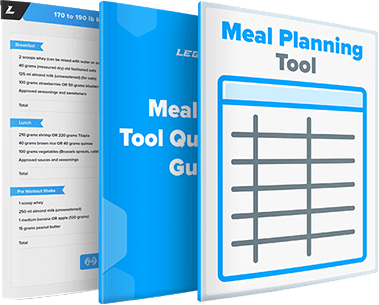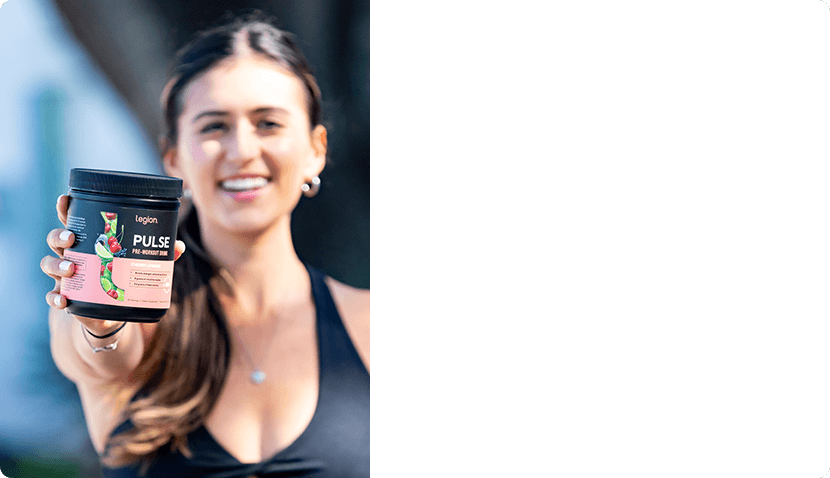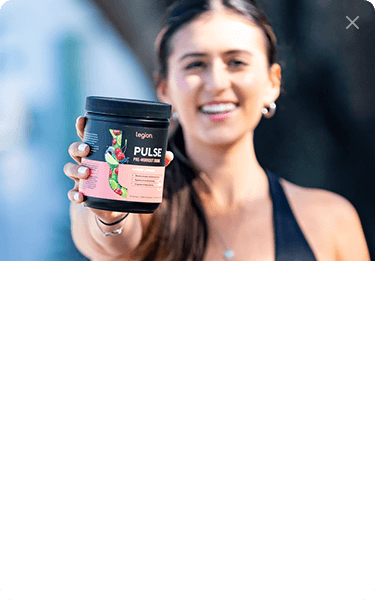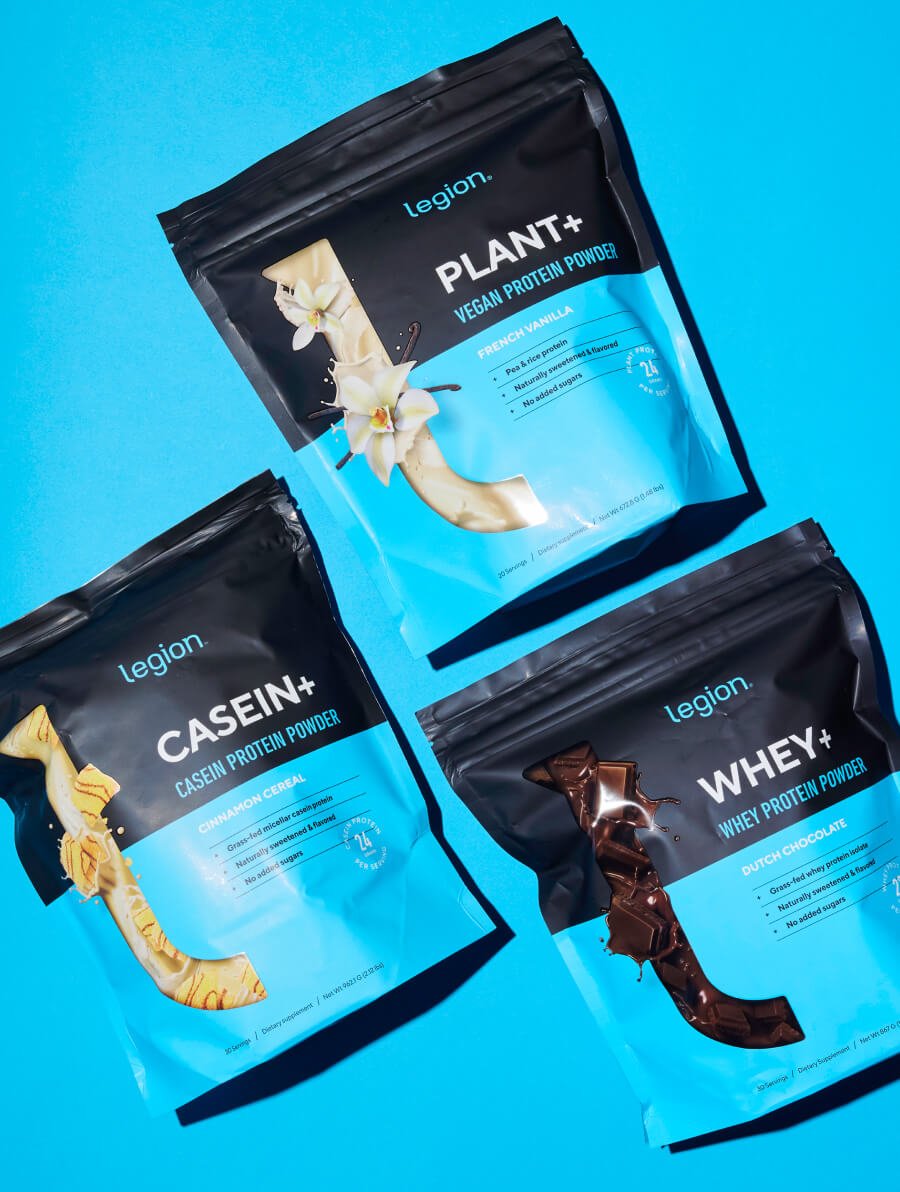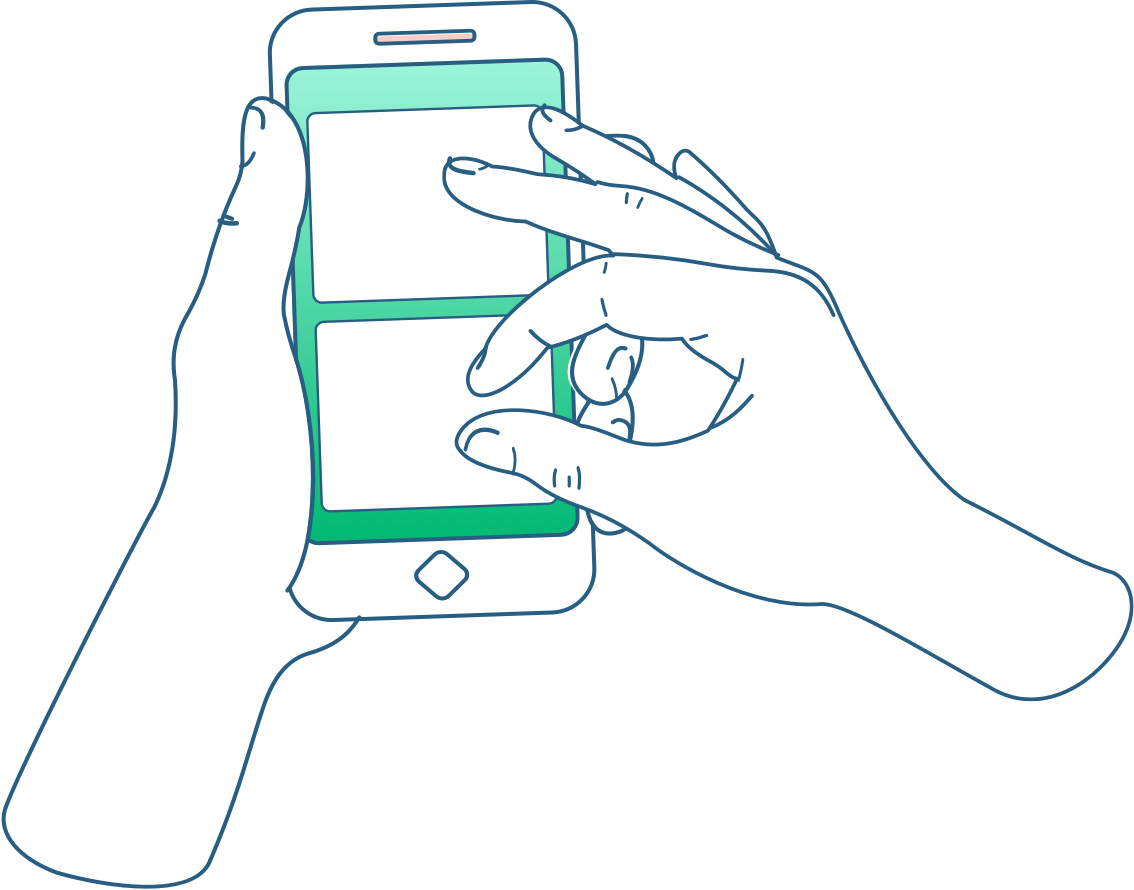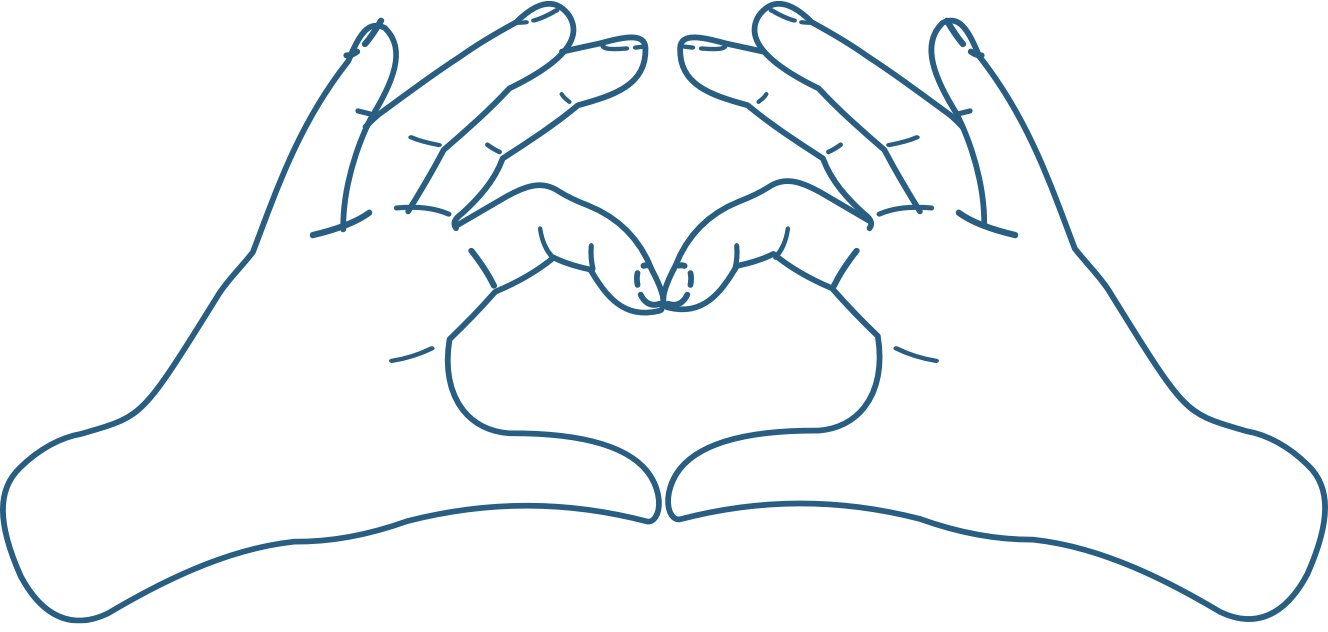Listen on Apple Podcasts | Listen on Spotify | Listen on YouTube
If you’re like most people, you’ve been paying attention to what’s happening with coronavirus.
Over 300,000 people have taken ill as of this writing and, depending on who you ask, the death rate ranges from 0.3 to 1 to 3% (one of the latest studies pins this number right in the middle at 1.4%).
This makes it slightly more deadly than the flu, and significantly more deadly for those who are over 60 years old.
While it’s easy to blow the situation out of proportion (and the media firestorm isn’t helping), it’s still wise to do everything you can to shore up your immune system in times like these.
You’re probably already taking preventative measures like washing your hands, avoiding large crowds, and so forth, but you’re still exposed to thousands of different germs every day (and possibly, COVID-19). That’s not to mention the thousands of other seasonal diseases that sweep around the world every year like a swarm of locusts.
And if one of these germs manages to sneak past your guard, it’s up to your immune system to knock them out before they make you sick.
That raises the question: can you do anything to boost your immune system?
If so, which methods work and which don’t?
You’ll learn the answers to all of those questions and more in this podcast.
So, let’s start with discussing what the immune system is and how it works, and then we’ll get to how to strengthen it and how to prevent and quickly overcome illnesses.
Mentioned on The Show:
What did you think of this episode? Have anything else to share? Let me know in the comments below!
Transcript:
Many people on the social medias these days are saying that you can’t boost your immune system. That no matter what you do, you can never boost it, no way know how, and anyone who says that you can is a fraud and a quack, and they should be tarred and feathered and ridiculed and run off the internet.
Well, those people are wrong. You can boost your immune system and I don’t care what their credentials are, they are wrong. You can absolutely boost your immune system. Now what is true is you can’t just swallow some pills or powders or swig down some detox T to supercharge your immune system.
Dramatically reduce your chances of getting sick. And so I think that’s why some people who almost certainly understand the stuff I’m gonna be talking about here about boosting immune function, and they would certainly agree that. Doing something like getting enough sleep boosts your immune system. I think the reason why they are just saying, nope, you can’t boost your immune system is because they’re trying to discourage people from doing things that are being popularly recommended to boost the immune system that do not work, or do not work enough to matter, and then putting themselves in situations where they’re more likely to get infected.
By not just the coronavirus, but other stuff that’s going around as well. And so again, I think that these people, often people in the medical community are saying that you can’t boost your immune system because they’re just trying to help people avoid a moral hazard, so to speak. Avoid just taking some vitamin C pills every day and thinking that they are now immune.
To the coronavirus or that they, uh, if they do get C Ovid 19, well then they’re just gonna take a bit more vitamin C and they’ll get over it quickly and easily. And I understand that, but I think these same people, again, they’re often medical professionals, are also doing their followers and the people who listen to them a disservice by not sharing with them useful science-based tips for improving immune function.
Improving is just a synonym for boosting, improving, enhancing, boosting. It’s all the same. And so that’s what I’m going to do here. Now before we get to the show, if you like what I’m doing here on the podcast and elsewhere, and if you wanna help me help more people get into the best shape of their lives, please consider picking up one of my bestselling health and.
Fitness books, I have Bigger, leaner, stronger for Men, thinner, leaner, stronger for Women. I have a flexible dieting cookbook called The Shredded Chef, as well as a 100% practical hands-on blueprint for personal transformation called the Little Black Book of Workout. Motivation. These books have sold well over a million copies and have helped thousands of people build their best body ever.
And you can find them on all major online retailers like Amazon, audible, iTunes, Cobo, and Google Play, as well as in select Barnes and Noble stores. So again, that’s bigger, leaner, stronger for men. Thinner, leaner, stronger for Women, the Shredded Chef and the Little Black Book of Workout Motivation. Oh, and I should also mention that you can get any of my audio books for free when you sign up for an Audible account, which is the perfect way to make those little pockets of downtime like commuting, meal prepping, dog walking, and cleaning.
A bit more interesting, entertaining, and productive. And if you want to take audible up on that offer and get one of my audio books for free, just go to legion athletics.com/audible and it’ll forward you over and then you can sign up for your account. Let’s start with, uh, a quick review of how the immune system functions.
What is it and how does it work? Well, the immune system is a complex system. It’s a complex network of cells and tissues and organs that work to identify, I. And kill and then purge, eliminate from the body, uh, pathogens and also to defeat disease. And so a quick summary of how it works is you have a virus or a bacterium or something else that causes disease that gets into the body.
The immune system recognizes it as something that should not be in the body, something that needs to be eliminated, and then, It tags it with an antibody and it uses special cells for this called B lymphocytes. Now, once a pathogen has been tagged by one of these antibody proteins, it has a harder time in infiltrating cells, so it’s not gonna work as effectively, and also it is marked for destruction, and that is carried out by other cells.
So for example, you have. T lymphocyte cells, also called T killer cells. You have natural killer cells and phagocytes that use those antibodies to identify their targets and then break them down. Or in some cases swallow them up. Just just eat them and then attack them with different enzymes and toxins that.
Kill them. Now. There are several factors that determine how well our immune system can function, including diet and exercise habits, sleep hygiene, stress levels, germ exposure when we were younger and vaccination status. But fortunately, research shows that only about a a quarter. Of our immune function is attributable to our genetics, and the remaining 75% or so is really a matter of our lifestyle and environment.
And so that is why you can boost your immune system. That 75% or so of your immune function is in your hands. The, the major factors are things that you control, like exercise. Sleep, managing stress, um, managing your alcohol intake, limiting your alcohol intake. And yes, there are some supplements you can take that can help as well.
Okay, so let’s talk about those things in more detail. Let’s start with exercise. If you want to have a robust immune system, and if you want to enhance your immune function, if you want to boost your immune system, you wanna make sure that you are exercising regularly. A good rule of thumb is at least. 30 minutes every day and more is better, of course, to a point.
If you push things too far, then you’re gonna run into symptoms related to overtraining and that can actually depress immune function, but that’s hard to do. Now, if you can’t exercise every day or all that intensely, that’s okay. Just do what you can. Every little bit helps. And that’s true for younger people as well as older people.
Many older people don’t realize how much. Uh, they can benefit from regular exercise. And as far as immunity goes, for example, there was a study conducted by scientists at Leon Sud Hospital Center, and they found that regular light exercise dramatically reduced the risk of upper respiratory tract infections in the elderly.
Now some people say that exercise actually depresses immune function, and this is intense exercise is usually what they’re referring to. Like a, a hard and heavy weightlifting workout is going to depress your immune system and therefore, maybe now is not the best time to be doing intense workouts. Now that theory is based on old research and animal research, and it has been more or less torn to shreds by more recent research that looks at studies conducted with humans and looks at the weight of the evidence on the whole.
A good example of a review of the literature, if you want to dive into the details, is a paper called Debunking the Myth of Exercise Induced Immune Suppression. Now that paper references research that shows, for example, that Olympic athletes get sick about as often as the general population, and that endurance athletes tend to get sick less often than the general population, not more as you would expect if.
Intense workouts actually reduced or impaired immune function. And so anyway, as is discussed in this paper, currently the consensus in the scientific community, based on the weight of the evidence is that regular, moderately intense exercise is going to enhance your immune function. It’s gonna reduce the risk of getting sick, not impair your immune system, and make it easier to get sick.
Okay, let’s move on to sleep. The next tool you can use to boost your immune system, because research clearly shows that not getting enough sleep is going to impair your immune system. It’s going to increase the risk of getting sick, and that’s no surprise because pretty much. Every major important physiological process and system in the body is monitored to some degree by your sleep hygiene.
So if you don’t sleep enough, there are just many things in your body that are not gonna work the way that they should, and the immune system is one of them. So what is enough sleep? For most people, it’s seven to nine hours per night. Some people can get by on less sleep than that, and some people can get by on quite a bit less.
I mean, some people they get by on three to four hours of sleep per night. Like that’s all. They sleep and they wake up fresh and they have been sleeping that way their entire lives and they don’t suffer from any symptoms related to sleep deprivation. And so these people have been researched as well.
They’ve, they have participated in studies. To help scientists understand how that’s possible, and that’s still an ongoing line of research. But what scientists do know is these people are very rare. Chances are you’re not one of them. I’m not one of them. Chances are we need seven to nine hours of sleep per night like everybody else.
Now as far as immune function goes and how sleep can impact that. A good example in the scientific literature is a study that was conducted by scientists at the University of California that found that people who slept less than six hours per night were 4.2 times more likely to catch a cold than people who were sleeping more than seven hours per night.
Now let’s talk about stress. Because if you want to have a strong and healthy immune system, you want to manage your stress levels. Too much stress for too long, chronically high stress levels can impair immune function and raise the risk of getting sick. A good example of this is found in a study that was conducted by scientists at Carnegie Mellon University that found that healthy adults who had recently been through a long-term threatening.
Stressful experience had the highest levels of something called glucocorticoid receptor resistance, G C R, which is a marker of impaired immune function. And what’s more, those same people were also much more likely to catch a cold when they were exposed to a rhinovirus. So in this study, the scientists saw not only.
Indications of reduced immune function. They then saw increased likelihood of getting sick when exposed to a virus. Another example is a study that was conducted by scientists at Ohio State University, and they found that the natural killer cell levels in first year medical students plummeted during exams when they were most stressed.
Something that is highly effective is making sure that you’re doing things that help you relax that, make sure that you are not in a chronically stressed state. And if you want to learn more about that, head over to legion athletics.com, search for Relax, and you’ll find an article I wrote that shares different evidence-based ways to relax.
And I may have recorded podcast based on the information in that article. I’m just not sure. So you can search the podcast feed or my YouTube channel, and there may also be some, um, audio, uh, slash video content on that as well. Alright, moving on. Let’s talk about alcohol. And if you like to drink, I have good news for you.
You don’t have to completely stop drinking to have a highly functioning immune system. Alcohol per se does not appear to impair immune function, but drinking too much does. Furthermore, research shows that binge drinking and alcoholism can raise your risk of respiratory tract infections in particular, and that’s not what we want right now with the coronavirus making the rounds and with C Ovid 19 attacking the lungs so aggressively.
Now, what about moderate drinking though? Because I said that it’s probably okay as far as immune function goes, but. What is moderate drinking? You’re gonna find different definitions depending on where you look, and so a good answer, a good definition as far as immune function goes, can be found in a study that was conducted by scientists at the Spanish National Research Council and what they found.
Is that drinking 10 to 14 grams of alcohol per day or less in women and drinking 20 to 24 grams per day or less in men was associated with slightly better immune function. Not worse. Now, the fact that it not only didn’t impair immune function, but enhanced it is probably due to variables that are. Part, if not possible, to control for relating to lifestyle and genetics, because other studies have shown that moderate drinking around the same amount doesn’t enhance immune function, but also doesn’t hurt it.
And so then I think it’s fair to say that the weight of the evidence currently is that in women drinking, let’s say somewhere around 10 grams of alcohol per day or less, maybe a little bit more than that or less. And 20 ish grams per day or less in men is not going to increase your chances of getting sick.
Hey, before we continue, if you like what I’m doing here on the podcast and elsewhere, and if you wanna help me help, More people get into the best shape of their lives. Please do consider picking up one of my best selling health and fitness books. My most popular ones are Bigger, leaner, stronger for Men, thinner, leaner, stronger for Women.
My Flexible Dieting Cookbook, the Shredded Chef. And my 100% practical hands-on blueprint for personal transformation, the little Black Book of Workout motivation. Now, these books have sold well over 1 million copies and have helped thousands of people build their best body ever, and you can find them anywhere online where you can buy books like Amazon, audible, iTunes, Cobo, and Google Play, as well as in select.
Barnes and Noble Stores. So again, that is bigger, leaner, stronger for men, thinner, leaner, stronger for Women, the Shredded Chef and the Little Black Book of Workout Motivation. Oh, and one other thing is you can get any one of those audio books 100% free when you sign up for an Audible account, and that’s a great way to make those pockets of downtime like commuting, meal prepping, and cleaning.
More interesting, entertaining, and productive. Now, if you want to take Audible up on that offer and get one of my audio books for free, just go to legion athletics.com/audible and sign up for your account. Alright. Now let’s talk about supplements. And I save this for last because it’s the least important.
You wanna make sure that you are doing everything else I talked about first before you are gonna be adding supplements to your regimen, unless, of course, for some reason you can’t do some of those things. I understand. If right now, let’s say you are a medical professional and you are unable to get seven to nine hours of sleep per night because you are working a lot, then.
Totally understand and it can definitely make sense to add some supplements. But if that’s not the case and you are just not sleeping enough because you’re not making it a priority, it makes a lot more sense to prioritize sleeping enough, uh, than to swallow pills and powders. So what supplements can you take to boost your immune system?
Well, unfortunately, many of the ingredients you find in immune supplements are either mildly. Effective, uh, hit and miss, sometimes effective, sometimes not, or just wholly ineffective. And that’s why many people, particularly medical professionals, are attacking immune supplements right now and saying that they’re all.
Fake news and no supplements are gonna do anything for your immune system. Now, that’s not true. What is true is most of the immune support supplements that you could find if you go on Amazon and you search for immune support. Yeah, most of that stuff is not going to do much of anything for you. But that doesn’t mean that all supplements, particularly, that all individual ingredients you could find and you could buy are not gonna help you.
I’m gonna share with you a few of these ingredients, a few of my favorite supplements that can boost your immune system. They can enhance the effectiveness of your immune system, and I’ll explain briefly what they are and how they work. But first, let’s list them out. They are Pelargonium, OIDs, spora, Portfolia, garlic, Panax, quinquefolia, zinc, vitamin C, and vitamin D.
Okay, so let’s talk about the first Pelargonium. OIDs. That’s a mouthful. It’s also known as African geranium and black geranium. And this is an herb that has long been used in South African traditional medicine, and it contains molecules that include, um, kalin, U M C K A L I N. You’ve maybe seen that before or heard of that before.
And what it does is it’s pretty cool. It doesn’t attack pathogens, it doesn’t directly impair pathogens. But it makes your cells slipperier. It makes it harder for pathogens to adhere to cells, and if they can’t adhere to cells, they can’t harm you. And there’s some really good high quality evidence of the effectiveness of this supplement.
Research shows that it dramatically reduces the duration of acute bronchitis, and it’s just good for anything that involves a dry cough. And studies show that it may also reduce both the duration and the severity of the common cold. Okay, now let’s talk about Spora cord Folia. This is also known as Gucci and Amit, and this is a shrub that’s native to India and it has long been used in Ayurvedic medicine, and it contains molecules known as polysaccharides and terpenoids that increase the killing.
Capacity of cells that your immune system uses to destroy pathogens. Now as far as research goes, studies show that spora cord folia can reduce nasal congestion and discharge and sneezing. You just get better faster when you have those symptoms. If you take it every day. Okay, now let’s talk about garlic and I’m not sure if I’m following the original order here, but whatever close enough garlic can help your immune system by providing your body with sulfur containing compounds that help it fight off pathogens.
And that’s why research shows that supplementing with garlic or just eating garlic. So if you’re gonna supplement, it’s gonna be an aged garlic extract supplement if you’re gonna eat it. Uh, ideally it would just be a clover two of raw garlic per day. And if you do that, you are less likely to get sick.
And if you do get sick, research shows that if you keep having it every day, then it’s going to probably reduce the severity. So, for example, studies show that garlic can reduce the severity of the common cold and the flu, and also it can help you feel better when you are sick. It can just improve your feeling of vitality and wellbeing when sick.
Alright, let’s talk about Panax Quinquefolia. This is also known as American Ginseng and North American Ginseng, and this is an herb that grows mainly in North America, but also China, and it has been long used in traditional Chinese medicine and it contains saccharides molecules known as saccharides that stimulate the immune system and help it fight off unwanted invaders.
And this is why research shows that supplementation with American ginseng reduces cold and flu infection rates, that you’re less likely to catch a cold or a flu if you’re taking it every day. Okay, let’s move on to zinc, which is a very important mineral. Your body needs zinc to create many different enzymes, proteins, cells.
It needs it to release vitamin A from the liver, and it also needs it to regulate the immune system. And how zinc works to enhance the immune system is it aids in the development and the function of cells that are vital to your immune system’s operations. And that’s why research shows that a zinc deficiency, if you don’t get enough zinc in your diet, that will increase the infection rates of various types of pathogens, a number of different ones.
And that supplementing with zinc when you are sick can reduce both the duration and the severity of the sickness. Now vitamin C is similar, not in its exact function. It does many different things in the body. It helps maintain healthy tissues, teeth, gums. It promotes wound healing. But vitamin C also does support immune function mostly by assisting with the development and the operations of cells that are vital to the immune system.
And similarly research shows if you don’t get enough vitamin C in your diet, which is kind of hard to do, but if you don’t, you are more likely to get sick from a number of different bugs. And if you are sick with the common cold in particular, research shows that supplementing with vitamin C every day can reduce the duration.
Studies have also shown that in athletes supplementing with one gram of vitamin C per day can reduce the likelihood of getting sick in the first place. Last, but definitely not least, we have vitamin D, which is actually a hormone. It’s not just a vitamin because most cells in the body have receptors for vitamin D, and it turns out that.
It’s not just important for bones, that’s what scientists and doctors once thought. But as research continued, mostly the research of Dr. Michael Holick eventually was discovered that vitamin D impacts many different physiological processes in the body, including ones related to the immune system. A good example of Vitamin D’s impact on the immune system is a study that was conducted by scientists at the University of Colorado, and what they found is after a year of supplementation, people who took a high dose of vitamin D experienced 40% fewer respiratory tract infections than people who took a lower dose.
Now other studies didn’t find that big of an effect. They didn’t find that vitamin D boosted immune function that much. However, the weight of the evidence is clear. If you wanna have a strong, effective immune system, you wanna make sure that you are getting enough vitamin D and a good starting point, A good baseline.
For most people is 2000 IU a day? You might need to take more. You might need to take 5,000 or even 10,000. But the best way to find out how much you need to take is to get blood work done because then you can see how your body responds to the supplements. Some people need to take more than others to reach the ideal blood level.
Alright, well, just to summarize, we have exercise. We have sleep hygiene. We have managing stress, limiting alcohol intake, taking the right supplements, as well as the preventative measures that we are hearing about all the time. I. Like washing our hands and avoiding large groups of people and trying not to touch our face and our mouth and our eyes, all those things.
Also, of course, help reduce the risk of getting eff infected. So do all of those things and you will give yourself the best chances for staying healthy during this global pandemic. All right. Well, that’s it for today’s episode. I hope you found it interesting and helpful. And if you did, and you don’t mind doing me a favor, could you please leave a quick review for the podcast on iTunes or wherever you are listening from?
Because those reviews not only convince people that they should check out the show, they also increase the search visibility. And help more people find their way to me and to the podcast, and learn how to build their best body ever as well. And of course, if you wanna be notified when the next episode goes live, then simply subscribe to the podcast in whatever app you’re using.
To listen and you will not miss out on any of the new stuff that I have coming. And last. If you didn’t like something about the show, then definitely shoot me an email at [email protected] and share your thoughts. Let me know how you think I could do this better. I read every email myself and I’m always looking for constructive feedback.
All right, thanks again for listening to this episode, and I hope to hear from you soon.
Scientific References +
- Holick MF, Binkley NC, Bischoff-Ferrari HA, et al. Evaluation, treatment, and prevention of vitamin D deficiency: An endocrine society clinical practice guideline. J Clin Endocrinol Metab. 2011;96(7):1911-1930. doi:10.1210/jc.2011-0385
- Martineau AR, Jolliffe DA, Hooper RL, et al. Vitamin D supplementation to prevent acute respiratory tract infections: Systematic review and meta-analysis of individual participant data. BMJ. 2017;356. doi:10.1136/bmj.i6583
- Ginde AA, Blatchford P, Breese K, et al. High-Dose Monthly Vitamin D for Prevention of Acute Respiratory Infection in Older Long-Term Care Residents: A Randomized Clinical Trial. J Am Geriatr Soc. 2017;65(3):496-503. doi:10.1111/jgs.14679
- Bouillon R, Carmeliet G, Verlinden L, et al. Vitamin D and human health: Lessons from vitamin D receptor null mice. Endocr Rev. 2008;29(6):726-776. doi:10.1210/er.2008-0004
- Bikle DD. Vitamin D and bone. Curr Osteoporos Rep. 2012;10(2):151-159. doi:10.1007/s11914-012-0098-z
- Annweiler C, Rolland Y, Schott AM, Blain H, Vellas B, Beauchet O. Serum vitamin D deficiency as a predictor of incident non-Alzheimer dementias: A 7-year longitudinal study. Dement Geriatr Cogn Disord. 2012;32(4):273-278. doi:10.1159/000334944
- Huang Y, Li X, Wang M, et al. Lipoprotein lipase links vitamin D, insulin resistance, and type 2 diabetes: A cross-sectional epidemiological study. Cardiovasc Diabetol. 2013;12(1):17. doi:10.1186/1475-2840-12-17
- Pilz S, Tomaschitz A, Drechsler C, Dekker JM, März W. Vitamin D deficiency and myocardial diseases. Mol Nutr Food Res. 2010;54(8):1103-1113. doi:10.1002/mnfr.200900474
- F. Holick M. Vitamin D: Evolutionary, Physiological and Health Perspectives. Curr Drug Targets. 2010;12(1):4-18. doi:10.2174/138945011793591635
- Hemilä H, Chalker E. Vitamin C for preventing and treating the common cold. Cochrane Database Syst Rev. 2013;2013(1). doi:10.1002/14651858.CD000980.pub4
- Anderson TW, Suranyi G, Beaton GH. The effect on winter illness of large doses of vitamin C. Can Med Assoc J. 1974;111(1):31-36. https://www.ncbi.nlm.nih.gov/pubmed/4601508. Accessed March 24, 2020.
- Carr AC, Maggini S. Vitamin C and immune function. Nutrients. 2017;9(11). doi:10.3390/nu9111211
- Hemilä H. Zinc lozenges and the common cold: a meta-analysis comparing zinc acetate and zinc gluconate, and the role of zinc dosage. JRSM Open. 2017;8(5):205427041769429. doi:10.1177/2054270417694291
- Singh M. Zinc for the common cold. https://www.ncbi.nlm.nih.gov/pubmed/21328251. Accessed March 24, 2020.
- Mohsenpour B. Relation between serum zinc levels and recurrent urinary tract infections in female patients: A case-control study. - PubMed - NCBI. https://www.ncbi.nlm.nih.gov/pubmed/31456957. Accessed March 24, 2020.
- Eijkelkamp BA, Morey JR, Neville SL, et al. Dietary zinc and the control of Streptococcus pneumoniae infection. PLoS Pathog. 2019;15(8):e1007957. doi:10.1371/journal.ppat.1007957
- Niccum BA, Stein DJ, Behm BW, Hays RA. Zinc Deficiency and the Recurrence of Clostridium difficile Infection after Fecal Microbiota Transplant: A Retrospective Cohort Study. J Nutr Metab. 2018;2018:9682975. doi:10.1155/2018/9682975
- High KP, Case D, Hurd D, et al. A Randomized, Controlled Trial of Panax quinquefolius Extract (CVT-E002) to Reduce Respiratory Infection in Patients With Chronic Lymphocytic Leukemia. J Support Oncol. 2012;10(5):195-201. doi:10.1016/j.suponc.2011.10.005
- Supe A, Purandare H. Immunomodulatory role of Tinospora cordifolia as an adjuvant in surgical treatment of diabetic foot ulcers: a prospective randomized controlled study. Indian J Med Sci. 2007;61(6):347. doi:10.4103/0019-5359.32682
- McElhaney JE, Goel V, Toane B, Hooten J, Shan JJ. Efficacy of COLD-fX in the prevention of respiratory symptoms in community-dwelling adults: A randomized, double-blinded, placebo controlled trial. J Altern Complement Med. 2006;12(2):153-157. doi:10.1089/acm.2006.12.153
- McElhaney JE, Gravenstein S, Cole SK, et al. A Placebo-Controlled Trial of a Proprietary Extract of North American Ginseng (CVT-E002) to Prevent Acute Respiratory Illness in Institutionalized Older Adults. J Am Geriatr Soc. 2004;52(1):13-19. doi:10.1111/j.1532-5415.2004.52004.x
- Qi B, Wang S, Wang Q, et al. Characterization and immunostimulating effects on murine peritoneal macrophages of a novel protein isolated from Panax quinquefolius L. J Ethnopharmacol. 2016;193:700-705. doi:10.1016/j.jep.2016.10.034
- Yan J, Ma Y, Zhao F, Gu W, Jiao Y. Identification of immunomodulatory signatures induced by american ginseng in murine immune cells. Evid Based Complement Alternat Med. 2013;2013:972814. doi:10.1155/2013/972814
- Ghosh R, Smith SA, Nwangwa EE, et al. Panax quinquefolius (North American ginseng) cell suspension culture as a source of bioactive polysaccharides: Immunostimulatory activity and characterization of a neutral polysaccharide AGC1. Int J Biol Macromol. 2019;139:221-232. doi:10.1016/j.ijbiomac.2019.07.215
- Jeong YY, Park HJ, Cho YW, et al. Aged red garlic extract reduces cigarette smoke extract-induced cell death in human bronchial smooth muscle cells by increasing intracellular glutathione levels. Phyther Res. 2012;26(1):18-25. doi:10.1002/ptr.3502
- Yeh YY, Liu L. Cholesterol-lowering effect of garlic extracts and organosulfur compounds: human and animal studies. J Nutr. 2001;131(3s):989S-93S. doi:10.1093/jn/131.3.989S
- V.N. L, N. A, I. Z, et al. Beneficial effects of aged garlic extract and coenzyme Q10 on vascular elasticity and endothelial function: the FAITH randomized clinical trial. Nutrition. 2013;29(1):71-75. http://ovidsp.ovid.com/ovidweb.cgi?T=JS&CSC=Y&NEWS=N&PAGE=fulltext&D=medl&AN=22858191. Accessed March 24, 2020.
- Budoff MJ, Takasu J, Flores FR, et al. Inhibiting progression of coronary calcification using Aged Garlic Extract in patients receiving statin therapy: A preliminary study. Prev Med (Baltim). 2004;39(5):985-991. doi:10.1016/j.ypmed.2004.04.012
- Ried K, Frank OR, Stocks NP. Aged garlic extract reduces blood pressure in hypertensives: A dose-response trial. Eur J Clin Nutr. 2013;67(1):64-70. doi:10.1038/ejcn.2012.178
- Josling P. Preventing the common cold with a garlic supplement: a double-blind, placebo-controlled survey. Adv Ther. 18(4):189-193. doi:10.1007/bf02850113
- Nantz MP, Rowe CA, Muller CE, Creasy RA, Stanilka JM, Percival SS. Supplementation with aged garlic extract improves both NK and γδ-T cell function and reduces the severity of cold and flu symptoms: A randomized, double-blind, placebo-controlled nutrition intervention. Clin Nutr. 2012;31(3):337-344. doi:10.1016/j.clnu.2011.11.019
- Richard S. Rivlin. Historical Perspective on the Use of Garlic. J Nutr. 2001;131(2):604S-615S. doi:10.1093/JN
- Badar VA, Thawani VR, Wakode PT, et al. Efficacy of Tinospora cordifolia in allergic rhinitis. J Ethnopharmacol. 2005;96(3):445-449. doi:10.1016/j.jep.2004.09.034
- Lizogub VG, Riley DS, Heger M. Efficacy of a Pelargonium Sidoides Preparation in Patients With the Common Cold: A Randomized, Double Blind, Placebo-Controlled Clinical Trial. Explor J Sci Heal. 2007;3(6):573-584. doi:10.1016/j.explore.2007.09.004
- Agbabiaka TB, Guo R, Ernst E. Pelargonium sidoides for acute bronchitis: A systematic review and meta-analysis. Phytomedicine. 2008;15(5):378-385. doi:10.1016/j.phymed.2007.11.023
- Janecki A, Conrad A, Engels I, Frank U, Kolodziej H. Evaluation of an aqueous-ethanolic extract from Pelargonium sidoides (EPs® 7630) for its activity against group A-streptococci adhesion to human HEp-2 epithelial cells. J Ethnopharmacol. 2011;133(1):147-152. doi:10.1016/j.jep.2010.09.018
- Watzl B, Bub A, Briviba K, Rechkemmer G. Acute intake of moderate amounts of red wine or alcohol has no effect on the immune system of healthy men. Eur J Nutr. 2002;41(6):264-270. doi:10.1007/s00394-002-0384-0
- Watzl B, Bub A, Pretzer G, Roser S, Barth SW, Rechkemmer G. Daily moderate amounts of red wine or alcohol have no effect on the immune system of healthy men. Eur J Clin Nutr. 2004;58(1):40-45. doi:10.1038/sj.ejcn.1601742
- Díaz LE, Montero A, González-Gross M, Vallejo AI, Romeo J, Marcos A. Influence of alcohol consumption on immunological status: A review. Eur J Clin Nutr. 2002;56:S50-S53. doi:10.1038/sj.ejcn.1601486
- Kornum JB, Due KM, Nørgaard M, et al. Alcohol drinking and risk of subsequent hospitalisation with pneumonia. Eur Respir J. 2012;39(1):149-155. doi:10.1183/09031936.00000611
- Cohen S, Janicki-Deverts D, Doyle WJ, et al. Alcohol and the Immune System. Proc Natl Acad Sci U S A. 2012;109(16):5995-5999. doi:10.1073/pnas.1118355109
- Kiecolt-Glaser JK, Garner W, Speicher C, Penn GM, Holliday J, Glaser R. Psychosocial modifiers of immunocompetence in medical students. Psychosom Med. 1984;46(1):7-14. doi:10.1097/00006842-198401000-00003
- Mehta P, Mcauley DF, Brown M, et al. Correspondence COVID-19 : consider cytokine storm syndromes and. Lancet. 2020;6736(20):19-20. doi:10.1016/S0140-6736(20)30628-0
- Cohen S, Janicki-Deverts D, Doyle WJ, et al. Chronic stress, glucocorticoid receptor resistance, inflammation, and disease risk. Proc Natl Acad Sci U S A. 2012;109(16):5995-5999. doi:10.1073/pnas.1118355109
- Sehgal A, Mignot E. Genetics of sleep and sleep disorders. Cell. 2011;146(2):194-207. doi:10.1016/j.cell.2011.07.004
- Prather AA, Janicki-Deverts D, Hall MH, Cohen S. Behaviorally Assessed Sleep and Susceptibility to the Common Cold. Sleep. 2015;38(9):1353-1359. doi:10.5665/sleep.4968
- Ambrosius U, Lietzenmaier S, Wehrle R, et al. Heritability of Sleep Electroencephalogram. Biol Psychiatry. 2008;64(4):344-348. doi:10.1016/j.biopsych.2008.03.002
- De Gennaro L, Marzano C, Fratello F, et al. The electroencephalographic fingerprint of sleep is genetically determined: A twin study. Ann Neurol. 2008;64(4):455-460. doi:10.1002/ana.21434
- Killgore WDS. Transcriptional Signatures of Sleep Duration Discordance in Monozygotic Twins. In: Progress in Brain Research. Vol 185. Elsevier B.V.; 2010:105-129. doi:10.1016/B978-0-444-53702-7.00007-5
- Sundelin T, Lekander M, Sorjonen K, Axelsson J. Negative effects of restricted sleep on facial appearance and social appeal. R Soc Open Sci. 2017;4(5). doi:10.1098/rsos.160918
- Magnavita N, Garbarino S. Sleep, health and wellness at work: A scoping review. Int J Environ Res Public Health. 2017;14(11). doi:10.3390/ijerph14111347
- Killgore WDS. Effects of sleep deprivation on cognition. In: Progress in Brain Research. Vol 185. Elsevier B.V.; 2010:105-129. doi:10.1016/B978-0-444-53702-7.00007-5
- Nedeltcheva A V., Kilkus JM, Imperial J, Schoeller DA, Penev PD. Insufficient sleep undermines dietary efforts to reduce adiposity. Ann Intern Med. 2010;153(7):435. doi:10.1059/0003-4819-153-7-201010050-00006
- Nieman DC, Wentz LM. The compelling link between physical activity and the body’s defense system. J Sport Heal Sci. 2019;8(3):201-217. doi:10.1016/j.jshs.2018.09.009
- Hoffman MD, Fogard K. Demographic characteristics of 161-km ultramarathon runners. Res Sport Med. 2012;20(1):59-69. doi:10.1080/15438627.2012.634707
- Hoffman MD, Krishnan E. Health and exercise-related medical issues among 1,212 ultramarathon runners: Baseline findings from the Ultrarunners Longitudinal TRAcking (ULTRA) Study. PLoS One. 2014;9(1):e83867. doi:10.1371/journal.pone.0083867
- Mårtensson S, Nordebo K, Malm C. High training volumes are associated with a low number of self-reported sick days in elite endurance athletes. J Sport Sci Med. 2014;13(4):929-933. https://www.ncbi.nlm.nih.gov/pubmed/25435787/. Accessed March 24, 2020.
- Fondell E, Lagerros YT, Sundberg CJ, et al. Physical activity, stress, and self-reported upper respiratory tract infection. Med Sci Sports Exerc. 2011;43(2):272-279. doi:10.1249/MSS.0b013e3181edf108
- Bonini M, Gramiccioni C, Fioretti D, et al. Asthma, allergy and the olympics: A 12-year survey in elite athletes. Curr Opin Allergy Clin Immunol. 2015;15(2):184-192. doi:10.1097/ACI.0000000000000149
- Derman W, Schwellnus M, Jordaan E. Clinical characteristics of 385 illnesses of athletes with impairment reported on the web-iiss system during the london 2012 paralympic games. PM R. 2014;6(8 SUPPL.):S23-30. doi:10.1016/j.pmrj.2014.05.016
- Campbell JP, Turner JE. Debunking the myth of exercise-induced immune suppression: Redefining the impact of exercise on immunological health across the lifespan. Front Immunol. 2018;9(APR). doi:10.3389/fimmu.2018.00648
- Spence L, Brown WJ, Pyne DB, et al. Incidence, etiology, and symptomatology of upper respiratory illness in elite athletes. Med Sci Sports Exerc. 2007;39(4):577-586. doi:10.1249/mss.0b013e31802e851a
- Campbell JP, Turner JE. Debunking the myth of exercise-induced immune suppression: Redefining the impact of exercise on immunological health across the lifespan. Front Immunol. 2018;9(APR). doi:10.3389/fimmu.2018.00648
- Murphy EA, Davis JM, Carmichael MD, Gangemi JD, Ghaffar A, Mayer EP. Exercise stress increases susceptibility to influenza infection. Brain Behav Immun. 2008;22(8):1152-1155. doi:10.1016/j.bbi.2008.06.004
- Heath GW, Ford ES, Craven TE, Macera CA, Jackson KL, Pate RR. Exercise and the incidence of upper respiratory tract infections. Med Sci Sports Exerc. 1991;23(2):152-157. doi:10.1249/00005768-199102000-00002
- Nieman DC, Henson DA, Fagoaga OR, et al. Change in salivary IgA following a competitive marathon race. Int J Sports Med. 2002;23(1):69-75. doi:10.1055/s-2002-19375
- Mackinnon LT, Ginn E, Seymour GJ. Decreased salivary immunoglobulin A secretion rate after intense interval exercise in elite kayakers. Eur J Appl Physiol Occup Physiol. 1993;67(2):180-184. doi:10.1007/bf00376664
- Kakanis MW, Peake J, Brenu EW, et al. The open window of susceptibility to infection after acute exercise in healthy young male elite athletes. Exerc Immunol Rev. 2010;16:119-137. doi:10.1016/j.jsams.2010.10.642
- Kostka T, Berthouze SE, Lacour JR, Bonnefoy M. The symptomatology of upper respiratory tract infections and exercise in elderly people. Med Sci Sports Exerc. 2000;32(1):46-51. doi:10.1097/00005768-200001000-00008
- Walsh NP, Gleeson M, Shephard RJ, et al. Position statement part one: Immune function and exercise. Exerc Immunol Rev. 2011;17:6-63. https://www.ncbi.nlm.nih.gov/pubmed/21446352. Accessed March 24, 2020.
- Walsh NP, Gleeson M, Pyne DB, et al. Position statement part two: Maintaining immune health. Exerc Immunol Rev. 2011;17:64-103. https://www.ncbi.nlm.nih.gov/pubmed/21446353. Accessed March 24, 2020.
- Baik I, Curhan GC, Rimm EB, Bendich A, Willett WC, Fawzi WW. A prospective study of age and lifestyle factors in relation to community-acquired pneumonia in US men and women. Arch Intern Med. 2000;160(20):3082-3088. doi:10.1001/archinte.160.20.3082
- Romaniszyn D, Pobiega M, Wójkowska-Mach J, et al. The general status of patients and limited physical activity as risk factors of Methicillin-resistant Staphylococcus aureus occurrence in long-term care facilities residents in Krakow, Poland. BMC Infect Dis. 2014;14(1):271. doi:10.1186/1471-2334-14-271
- Leveille SG, Gray S, Lacroix AZ, Ferrucci L, Black DJ, Guralnik JM. Physical inactivity and smoking increase risk for serious infections in older women. J Am Geriatr Soc. 2000;48(12):1582-1588. doi:10.1111/j.1532-5415.2000.tb03867.x
- Pape K, Ryttergaard L, Rotevatn TA, et al. Leisure-Time Physical Activity and the Risk of Suspected Bacterial Infections. Med Sci Sports Exerc. 2016;48(9):1737-1744. doi:10.1249/MSS.0000000000000953
- Warburton DER, Bredin SSD. Health benefits of physical activity: A systematic review of current systematic reviews. Curr Opin Cardiol. 2017;32(5):541-556. doi:10.1097/HCO.0000000000000437
- Brodin P, Jojic V, Gao T, et al. Variation in the human immune system is largely driven by non-heritable influences. Cell. 2015;160(1-2):37-47. doi:10.1016/j.cell.2014.12.020
- Mikkola J, Rusko H, Izquierdo M, Gorostiaga EM, Häkkinen K. Neuromuscular and cardiovascular adaptations during concurrent strength and endurance training in untrained men. Int J Sports Med. 2012;33(9):702-710. doi:10.1055/s-0031-1295475
- Riou J, Hauser A, Counotte MJ, Althaus CL. Adjusted age-specific case fatality ratio during the COVID-19 epidemic in Hubei, China, January and February 2020. medRxiv. March 2020:2020.03.04.20031104. doi:10.1101/2020.03.04.20031104
- Paget J, Spreeuwenberg P, Charu V, et al. Global mortality associated with seasonal influenza epidemics: New burden estimates and predictors from the GLaMOR Project. J Glob Health. 2019;9(2). doi:10.7189/jogh.09.020421
- Estimating the infection and case fatality ratio for COVID-19 using age-adjusted data from the outbreak on the Diamond Princess cruise ship | CMMID Repository. https://cmmid.github.io/topics/covid19/severity/diamond_cruise_cfr_estimates.html. Accessed March 24, 2020.
- Wu JT, Leung K, Bushman M, et al. Estimating clinical severity of COVID-19 from the transmission dynamics in Wuhan, China. Nat Med. March 2020:1-5. doi:10.1038/s41591-020-0822-7
